Introduction
Nasal drops often used to relieve nasal congestion due to colds.
It works by narrowing the blood vessels in the nose, thus reducing blood flow into the linings of nose This reduces swelling and the feeling of congestion.
Types of Nasal Drops
Below are the examples of nasal drops available for used as decongestant:
Nasal drops preparations that contain decongestants
- Oxymetazoline Nasal Drop (0.025%) – for children
- Oxymetazoline Nasal Drop (0.05%) – for adults
- Ephedrine 0.5% Nasal Drop
Nasal drop that does not contain a decongestant
- Normal Saline Nasal Drop – for infants
Administration Technique for adults / children
- Gently, blow your nose.
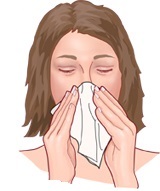
- Wash your hands thoroughly with soap and water.
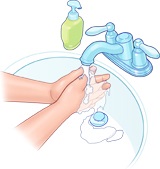
- Check the dropper tip to ensure it is not damaged or broken.
- Avoid the dropper tip from touching your nose.
- Tilt your head back while sitting down or lie down on a flat surface with your head hanging over the edge.
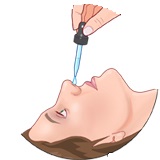
- Instil the medication into your nostrils as directed.
- Then, bend your head forward towards your knees. Gently, move your head to the right and left alternately for a few times.
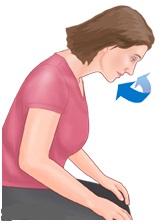
- Remain in this position for a few minutes.
- Replace the cap and wash your hands.
Administration Technique for infants (Normal Saline Nasal Drop)
- Lay your baby on his/her back. Place a rolled towel on the shoulders so that the head is below the chest.
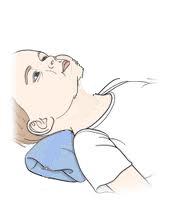
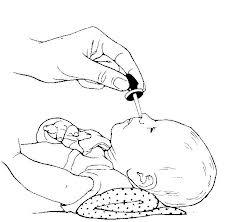
- Instil 2 or 3 drops of medicine into each nostril. Leave on for 30 – 60 seconds.
- Then, hold your baby with the face downward. This allows the mucous to flow out.
- Wipe and clean the mucous discharge around the nostrils using a soft tissue. Do not use a cotton bud.
- You can also use a nasal bulb to draw out excessive mucous if necessary.
Side Effects
Below are common the side effects that may occur when you use a nasal drops preparation containing decongestant:
- Irritation (stinging and itching) in the lining of nose
- Dryness in the nose
- Discomfort in the throat
- Headache
- Sneezing
Precautions
- This medicine is to be instilled into the nostrils only. Not to be taken by mouth.
- Do not use nasal drops containing decongestant continuously for more than what is being directed. Excessive use can reduce its effectiveness. Moreover, continuous-long term use will cause rebound nose block if you suddenly stop using it.
- Do not use this medicine after 28 days it has been opened.
- Each bottle can be used by one patient only to prevent the spread of infection.
Storage
- Store in a cool and dry place. Protect from direct sunlight and heat.
- Keep out of reach of children.
Reminder
- Follow the directions carefully.
- Use nasal drops only as long as directed.
- Inform your doctor or pharmacist if you have chronic illnesses such as heart disease, hypertension, diabetes, thyroid disorders or any other medical conditions.
- Consult your pharmacist if you are taking other medications.
| Last Reviewed | : | 05 June 2014 |
| Writer | : | Rose Aniza bt. Rusli |
| Accreditor | : | Norhayati bt. Musa |







